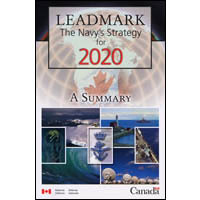 (Edited: Volume Corrected) Dustin Walker, founder and head editor of RealClearDefense, joins us for our third podcast. We talk about Tom Clancy and his legacy, the Government Shutdown our upcoming sacred cows week, African security issues, Iran’s nuclear weapons program, and a bit about technology and innovation. SC Episode 3: RealClear Podcast
(Edited: Volume Corrected) Dustin Walker, founder and head editor of RealClearDefense, joins us for our third podcast. We talk about Tom Clancy and his legacy, the Government Shutdown our upcoming sacred cows week, African security issues, Iran’s nuclear weapons program, and a bit about technology and innovation. SC Episode 3: RealClear Podcast
Updated: Raid at Barawe?
Update: U.S. officials say SEALs were involved in the strike against Barawe but have not released details on casualties or the success/target of the mission. Elsewhere, US forces have reportedly captured Anas al-Libi, a involved in the 1998 attack on the U.S. embassies in Kenya and Tanzania, and are holding him aboard a U.S. naval vessel.
A developing story today: reports coming out of Somalia of a pre-dawn, seaborne raid at the al-Shabaab-held coastal town of Barawe. Al Shabaab at first stated U.S. forces may have been involved, then said the raid consisted of British SAS and Turkish forces.
“The commander of the British force, it said, was killed during the attack and four other SAS operatives were critically wounded. One Turkish soldier was also wounded, according to a statement by Sheikh Abdiasis Abu Musab, al Shabaab’s military operation spokesman.”
British and Turkish officials are publicly denying any involvement. France has similarly denied involvement despite one Somali official’s statement that the raid was carried about by French forces targeting a Chechen or Shabaab leader Ahmed Godane, aka Mukhtar Abu al-Zubayr, believed behind the attack on Nairobi’s Westgate mall.
Other accounts say with some troops also landed by helicopter, and that the focus of the raid was a two-story beach-side house used as a headquarters.
The only non-conflicting report at this point seems to be that residents awoke to the sounds of gunfire around 3am.
Cast Adrift: Canada’s Maritime Strategy
This article is a part of The Hunt for Strategic September, a week of analysis on the relevance of strategic guidance to today’s maritime strategy(ies). As part of the week we have encouraged our friendly international contributors to provide some perspective on their national and alliance strategic guidance issues.
As the United States undertakes a rigorous review of its strategic guidance, Canadian defence planners should take note. An update is expected for an important element of American maritime strategy, Cooperative Seapower for the 21st Century, which calls for operations to be carried out ‘ideally’ in concert with allies. The Quadrennial Defence Review (QDR), to be issued next year, will assess the threats and challenges faced by the United States and set out long-term plans on how to develop American capabilities accordingly.
 In contrast, Canada lacks an equivalent to the QDR, with any strategic review conducted on an ad hoc basis. In 2001, a weighty tome was published by Canada’s Department of National Defence (DND), entitled Leadmark: The Navy’s Strategy for 2020. As this was developed and released prior to the September 11th attacks and such operations as Active Endeavour, an update came in 2005, entitled Securing Canada’s Ocean Frontiers: Charting the Course from Leadmark. Since then, no further updates to Canada’s maritime strategy have been released. In 2008, DND released the Canada First Defence Strategy (CFDS), but this is primarily concerned with funding and procurement issues for the Canadian Forces as a whole. The CFDS is already badly dated; where it does briefly outline the Canadian Forces’ strategic objectives, it identifies security for the 2010 Winter Olympics as a top priority.
In contrast, Canada lacks an equivalent to the QDR, with any strategic review conducted on an ad hoc basis. In 2001, a weighty tome was published by Canada’s Department of National Defence (DND), entitled Leadmark: The Navy’s Strategy for 2020. As this was developed and released prior to the September 11th attacks and such operations as Active Endeavour, an update came in 2005, entitled Securing Canada’s Ocean Frontiers: Charting the Course from Leadmark. Since then, no further updates to Canada’s maritime strategy have been released. In 2008, DND released the Canada First Defence Strategy (CFDS), but this is primarily concerned with funding and procurement issues for the Canadian Forces as a whole. The CFDS is already badly dated; where it does briefly outline the Canadian Forces’ strategic objectives, it identifies security for the 2010 Winter Olympics as a top priority.
Canada could benefit greatly from an equivalent process to the QDR. One of the objectives of such a review should be to determine whether the Royal Canadian Navy is still in strategic lockstep with its allies. If a significant gap in capabilities and/or priorities is found, an update on the scale of Leadmark 2.0 may be necessary in order to ensure Canada is capable of upholding its commitments to its allies. There is some cause for concern as to whether Canada is already falling behind, making the need for a defence review all the more urgent.
In 2011, as a follow-up to the CFDS, the National Shipbuilding Procurement Strategy (NSPS) was released. While some of the particulars are hazy, the NSPS is intended to modernize the Royal Canadian Navy, replacing many vessels that have been operating well past their intended date of retirement. For example, the Joint Support Ship Project will see Canada’s two Protecteur-class auxiliary vessels replaced with three Berlin-class replenishment ships. However, perhaps the most ambitious aspect of the NSPS is the Single Class Surface Combatant Project, which calls for the replacement of Canada’s 12 Halifax-class frigates and three Iroquois-class destroyers with 15 vessels of as yet unknown capabilities or classification. However, there are strong indications that these new vessels will be similar in many respects to the current Halifax-class frigate.
As some observers have noted, the United States Navy has placed greater attention in recent years on the littoral zone. Meanwhile, Canada remains focused on a traditional naval task force role, lacking sealift capabilities or any means of reliably deploying in littoral waters. If the Littoral Combat Ship is the shape of things to come, Canada’s expected frigates (or at least frigate-like vessels) may not be fully compatible. Though the Royal Canadian Navy will remain useful for maritime interdiction and generally supporting the United States in ensuring continental defence, Canada may find itself largely ignored by American strategists in favour of other, more compatible allies. Had DND undertaken reviews similar to the QDR, some course correction could have been made to Leadmark, its successor, and the subsequent NSPS. One can only hope that the Single Class Surface Combatant once unveiled will prove to be something capable of participating actively alongside US and NATO maritime forces.
Even so, calls for an update to Canadian strategic guidance have been limited. In analyzing Canadian public opinion, the original Leadmark laments, “some Canadians are unaware of their navy, and do not understand where ‘naval’ fits into a ‘national’ strategy.” 12 years later, one may wonder whether parliamentarians have also forgotten their navy, hoping that haphazard fleet-replacement will be a sufficient remedy.
Paul Pryce is a Junior Research Fellow at the Atlantic Council of Canada. With degrees in political science from universities in both Canada and Estonia, he has previously worked in conflict resolution as a Research Fellow with the OSCE Parliamentary Assembly. His research interests include African security issues and NATO-Russia relations.
Tom Clancy, Fair Winds and Following Seas

“Nothing is as real as a dream. The world can change around you, but your dream will not. Your life may change, but your dream doesn’t have to. Responsibilities need not erase it. Duties need not obscure it. Your spouse and children need not get in its way, because the dream is within you. No one can take your dream away.”
Bestselling author and popular commentator, Thomas Leo Clancy Jr., recently passed away at the age of 66.
Mr. Clancy’s prolific career began rather unexpectedly. The former insurance agent originally began writing Patriot Games in the early 1970s, but after learning of the mutiny aboard the USSR vessel “Storozhevoy,” he authored The Hunt for the Red October. After several publishers turned down the manuscript, Mr. Clancy approached the United States Naval Institute (USNI) and struck a deal with them resulting in the publication of their first fictional novel. His sole goal during this process was simply just publication because “If your name is in the Library of Congress, you’re immortal.” Yet, The Hunt for the Red October reached higher levels of success, and once President Reagan mentioned that it had been keeping him up all night, it immediately became a bestseller and remains to this day USNI’s most successful publication.
Mr. Clancy’s ability to bring out his environment with technical details clearly translated to the reader set high, new standards for fictional authors. Unlike many authors that “data-dump” readers with incomprehensible numbers and statistics, Mr. Clancy took the time to explain the mechanics of the real and “imagined” items in his universe. The ability for an author like Mr. Clancy to describe how a magnetohydrodynamic drive (The Hunt for the Red October) functioned to a diverse audience (who mostly had no experience with submarines and did not have “Google” to help them) is arguably unprecedented in fiction. Ranging from describing the classic “Crazy Ivan” submarine maneuver used by Soviet submarines (The Hunt for the Red October) to the more technical AQS-13 dipping sonar on an SH-60 (Red Storm Rising), Mr. Clancy’s descriptions of these advanced, and often secret, topics are so well done that he once admitted that “I’ve made up stuff that’s turned out to be real, that’s the spooky part.”
Yet, Mr. Clancy supplemented his war-gamed scenarios and weapons with some of the best characters. Jack Ryan serves for some as a cooler alternative than James Bond, and even Jason Bourne. His background, demeanor, and successes kept readers enthralled—watching Ryan connect the dots to foil America’s adversaries (and the occasional political ones), and eventually somehow get caught up in a gunfight, is not only awesome, but it never gets old. Sure, Ryan does not drink the famous Vesper cocktail or drive an Aston Martin, readers feel like they actually have something in common with him. Watching him achieve heroic feats while displaying the qualities shared with readers is a rewarding experience. How can you not like a man that stockbroker, to CIA historian, to President?
For many, Mr. Clancy was more than a literary powerhouse–he was an inspiring figure. When he put the pen to the paper, he created not only a page turner, but also created an educational and motivating experience that siphoned the abundance of energy of teenagers and men of all ages. From the submarine bridge in The Hunt for the Red October to the fields of the Fulda Gap in Red Storm Rising and the Olympics in Rainbow Six, Mr. Clancy always provided his readers with as realistic picture as possible, inspiring my personal current academic and professional pursuits, and many others. His characters, and the ideas that they fought for, truly embody the American spirit.
Although Mr. Clancy is in a different place, Jack Ryan, John Clark, Admiral Greer and Ding Chavez will always live in our libraries.

